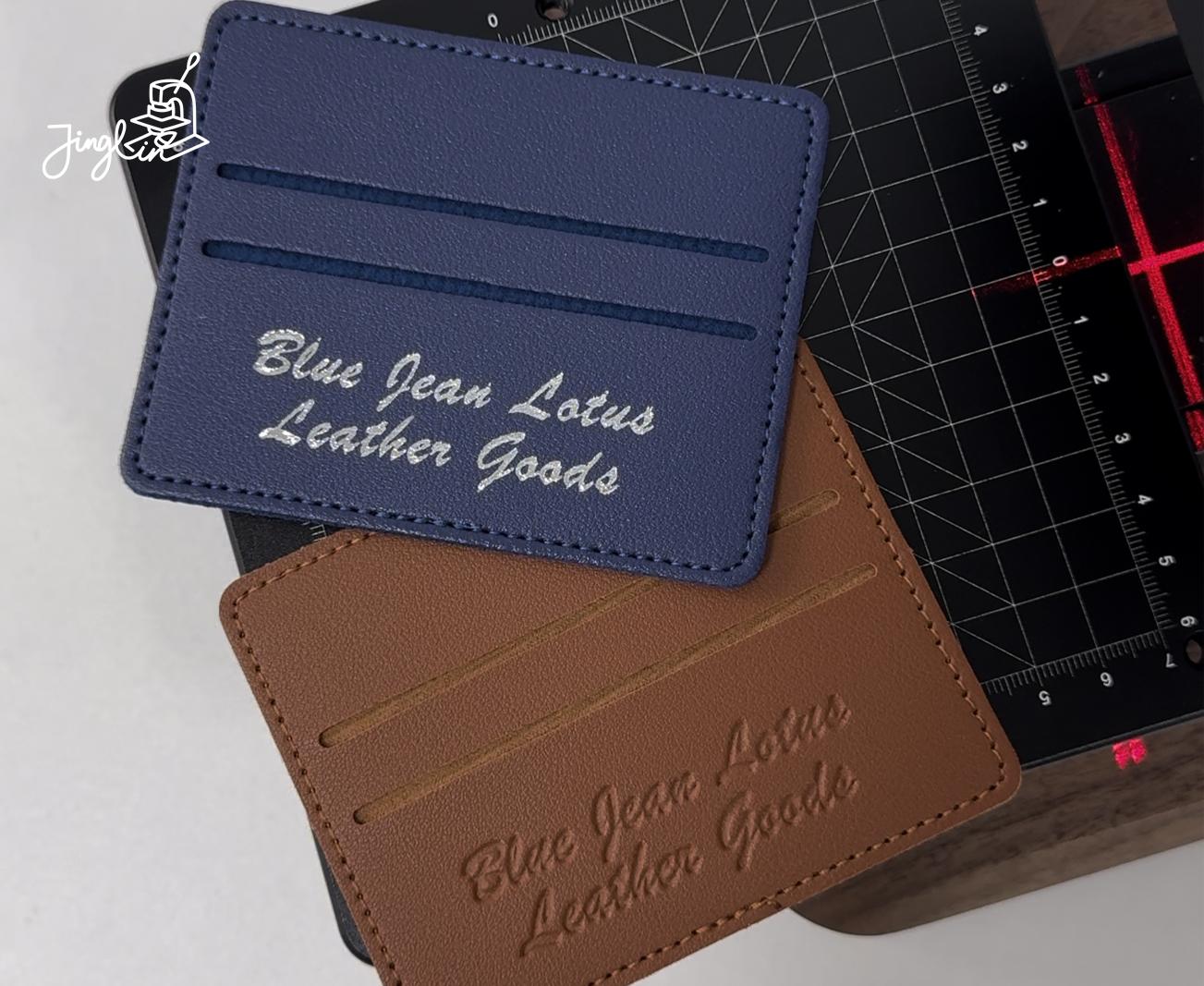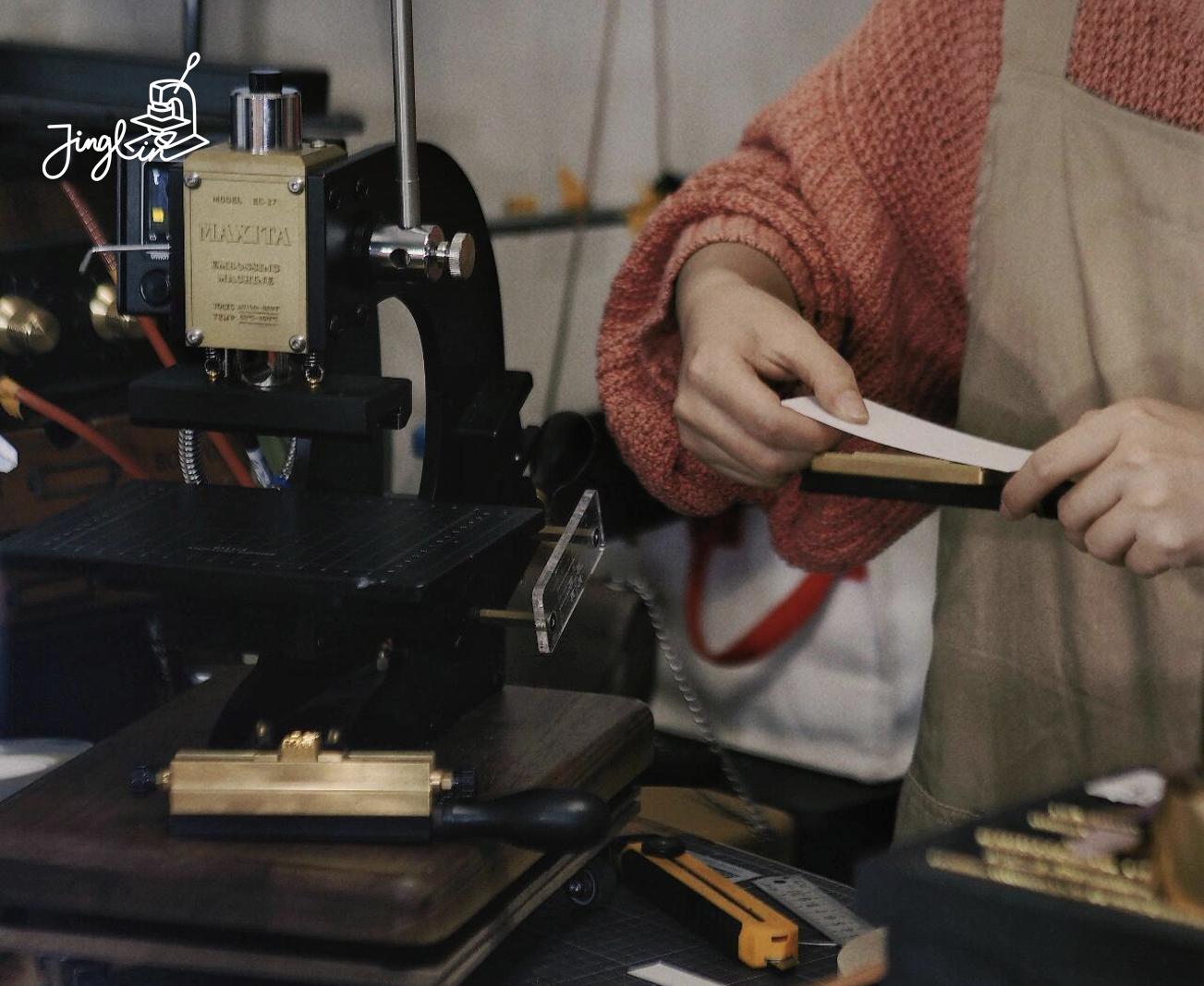Search the Community
Showing results for tags 'hot stamping tips'.
-
Personalized leather goods have become increasingly popular as thoughtful gifts and stylish accessories. One of the most elegant and eye-catching ways to customize leather is with foil monograms. Whether you're crafting handmade leather wallets or offering a luxury branding service, this guide will show you how to personalize leather goods using foil stamping to create professional and lasting impressions. What Is Foil Monogramming? Foil monogramming is a method of imprinting letters or designs onto leather using heat and metallic foil. This technique gives leather items a premium finish, with gold, silver, or colored foil catching the light and adding visual appeal. It's commonly used for: Initials on wallets, notebooks, and bags Company logos on promotional products Personal messages on leather gifts Foil stamping is both decorative and durable, making it ideal for everyday use items. Tools and Materials You'll Need To personalize leather goods with foil monograms, you’ll need the following tools: Hot Foil Stamping Machine: A precision heat press that applies foil to leather using heat and pressure. Metal Letter Dies or Custom Logo Plate: Used to stamp the desired initials or design. Foil Sheets: Metallic or pigment foil in your preferred color (gold, silver, rose gold, etc.). Vegetable-tanned Leather: Works best for stamping due to its firmness and smooth surface. Ruler and Alignment Tools: For precise placement of the monogram. Step-by-Step Guide to Foil Monogramming Leather 1. Prepare the Leather Surface Ensure the leather is clean, dry, and flat. If needed, lightly dampen the area to be stamped to help the foil adhere better. 2. Set Up the Hot Foil Machine Adjust the machine’s temperature and pressure according to the foil and leather type. Most leather foil stamping is done at 100–130°C (212–266°F). 3. Align the Monogram Place the metal dies or logo plate into the press and carefully position the leather item underneath. Use alignment tools to ensure perfect placement. 4. Apply Heat and Pressure Lower the press onto the leather with even pressure. Hold for 1–2 seconds, then lift. The foil should transfer cleanly to the leather. 5. Inspect and Touch Up Let the leather cool, then check the imprint. If needed, re-stamp any missed areas or carefully remove excess foil. Tips for a Professional Finish Test on scrap leather before stamping your final product. Choose high-quality foil for consistent results and strong adhesion. Use guides and jigs for uniform positioning on bulk orders. Offer multiple foil colors to match your branding or gift themes. Why Foil Monograms Add Value Custom foil stamping transforms a simple leather product into a luxurious, one-of-a-kind item. Personalized items are highly desirable for: Corporate gifts Wedding favors Holiday presents Brand merchandise Adding monograms not only boosts the product’s appeal but can also increase its price point and perceived value. Conclusion Learning how to personalize leather goods with foil monograms is a rewarding skill for crafters, designers, and business owners. With the right tools and techniques, you can create stunning, customized leather items that stand out in the market.
-
Hot foil stamping machines are widely used to enhance the texture and visual appeal of products in industries such as leather goods, packaging, paper, and plastics. However, many users—especially beginners—encounter various technical or operational issues. This article provides a comprehensive list of frequently asked questions (FAQs) and actionable solutions to help you get the best results from your foil stamping machine. Issue 1: The Stamped Pattern is Blurry or Incomplete Possible Causes Temperature or pressure is too low Stamping time is too short Poor quality die or foil Solutions Adjust the temperature accordingly: 120°C–140°C for leather, 90°C–110°C for paper Increase dwell time and/or pressure Use high-quality foil and ensure the die is clean and finely engraved Issue 2: Foil Peels Off Easily or Loses Color Possible Causes Surface material is unsuitable for foil transfer Incompatible foil used Lack of preheating Solutions Test a small area before full application Choose foil types specifically designed for the material Preheat both the stamping head and the material to improve adhesion Issue 3: Misalignment or Ghosting (Double Image) Possible Causes Die is not firmly fixed Worktable or hand movement is unstable Improper positioning system setup Solutions Secure the die tightly before stamping Use jigs or clamps for accurate positioning Choose a machine with positioning guides or an automatic system Issue 4: Foil Sticks or Leaves Fuzzy Edges Possible Causes Temperature is too high Uneven pressure applied Die edges are not clean Solutions Lower the temperature or reduce pressure Clean the stamping head and die regularly Polish or reprocess the die’s edges Issue 5: Machine is Noisy or Overheating Possible Causes Worn parts or insufficient lubrication Temperature control malfunction Overuse without breaks Solutions Lubricate moving parts regularly Check temperature sensors and wiring Allow the machine to cool down every 2 hours of continuous use Quick Troubleshooting Chart Problem Main Cause Suggested Fix Blurry image Low temp/pressure Increase temperature or pressure Foil peels off Material not compatible Test and change foil type Misalignment Die not fixed Use clamps or guide system Fuzzy edges Excessive heat Lower temp and clean die Noise/overheating Mechanical wear Lubricate and cool down machine FAQs: Additional User Questions Q: Can I stamp multiple colors with one machine? A: Yes, but you need to perform multiple passes using different foils and dies. Q: What is the average lifespan of a hot foil machine? A: With proper maintenance, machines can last 5–10 years. Q: Can I use a hot foil stamping machine at home? A: Yes, small manual foil stamping machine are ideal for home studios and custom projects. Final Thoughts: Consistency and Maintenance Are Key While foil stamping is relatively straightforward, attention to detail makes all the difference. Familiarizing yourself with common issues and solutions will not only improve your results but also prolong your machine’s life. More tutorials and expert advice, please feel free to share in the comments section.




